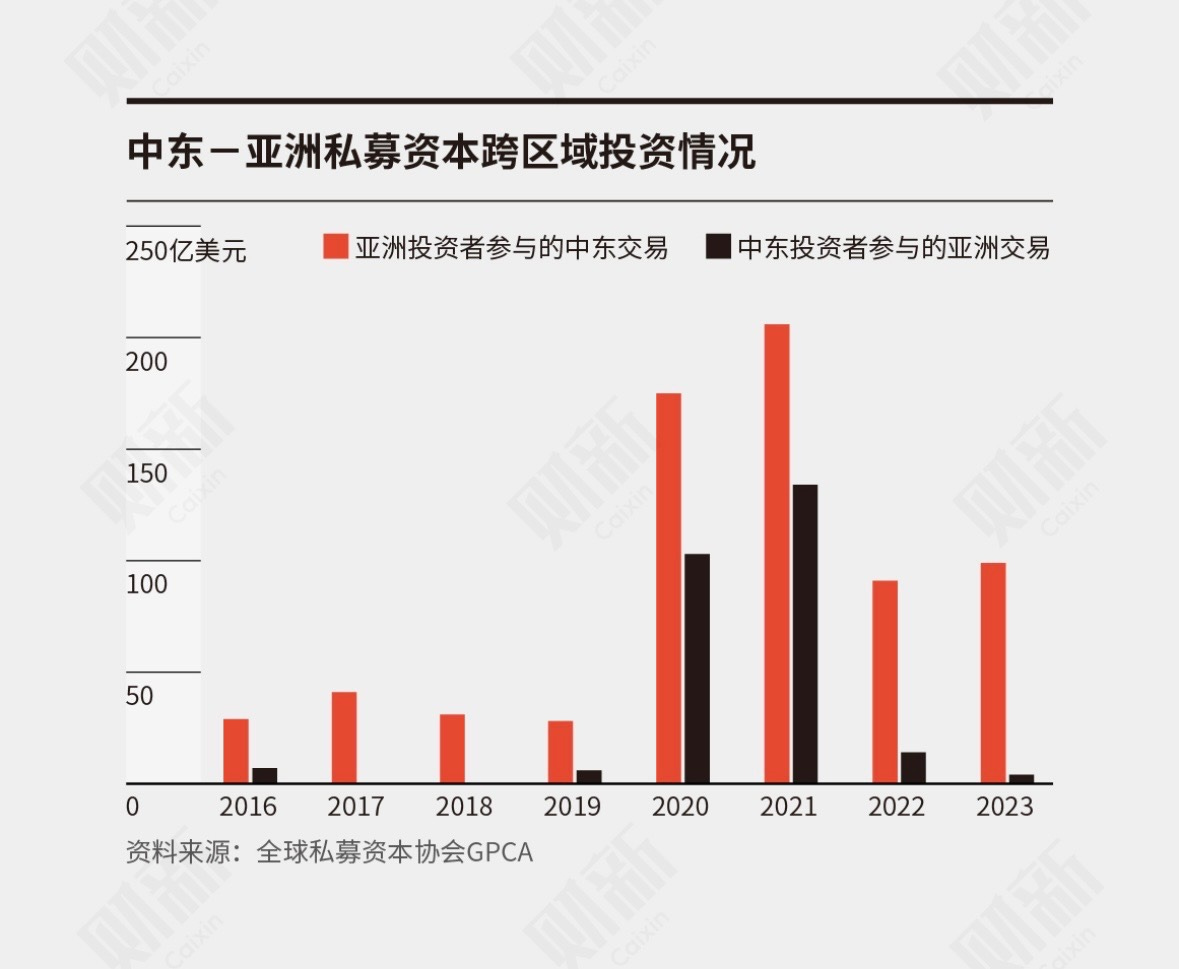评价: 力荐
Normal view
“答案不唯一”,多元世界的思考密码 (评论: 不一样的答案)
罗翔和三大美女探讨《要有光》,探秘作者梁鸿究竟为何而写、为什么为青少年呼喊 (评论: 要有光)
什么是幽灵学 (评论: 我生命中的幽灵)
在网络时代,给女作家贴上“女性主义”标签是野蛮的 (评论: 西方谐典)
实证科学的限度:道德是人类的本能还是社会演化的产物? (评论: 善与恶的发明)
一期长达5小时的播客,一个年底征稿,和一次游荡者重大更新
一、牛马吐槽播客更新
我们此前举办过“爹和爹味,吐槽大会”,以及“吐槽八卦大会”,每一次都给我们自己和收听的朋友带来了许多的欢愉。因为吐槽是一种释放,幽默且具攻击性的吐槽是一次破坏加重建。人被压缩紧皱的心脏和灵魂,在吐槽的过程中重新舒展吸水变得饱满。
这一次,我们向西西弗斯的石头发起吐槽:向上班工作这个吐槽富矿开炮也开箱!
通过各行各业的投稿者看见各种光鲜亮丽让人艳羡的工作背后的真实(尤其在这个就业艰辛的当下),看到人如何“屎上雕花”和被“官僚主义”折磨到发疯,狂乱,“失智”和失常。而在吐槽过后,我们也试图寻找一种答案,一种可能:人的尊严和创造力不被磋磨的可能。
希望这期播客能把欢笑,安慰和可能性的答案都带给你!
【特别说明】本期播客长达5个小时,内容精彩,甚至劲爆,同时在说真话的时候不可避免就会相当危险,危险到在国内的网易云和喜马拉雅我们也无法设置付费上线,仅在放学以后的爱发电、Spotify、Newsletter上线并设置付费门槛。
注:Newsletter和Spotify是月度会员解锁既往所有付费内容方式,解锁完记得在权益期及时查看所有付费内容,以最大化享受权益。如下月不再继续付费订阅,也记得及时解除,以防发生计划外扣费;爱发电是单期播客付费购买方式。可根据自身情况选择最适合的方式,苹果用户请不要下载app store的爱发电app,是诈骗。
基于收费所得,我们也将会给每个被采用的投稿者,发去88元的红包,作为鼓励打工人解除身上鞍鞯绳索的基金。
播客音频链接:
爱发电:
(本期封面由莫不谷通过Canva制作:感谢于翔宇脱口秀提供的灵感—“人类的退化”)
二、2025的年终征稿
不包饺子包真心:这世界仍有什么值得我们赞美和感恩
生命给我们每个人都赠送了礼物。它不是命运的礼物,没有标价,不需要偿还,它只需要我们打开箱子看一看,看到这些礼物,享受这些礼物,使用这些礼物,过上自己真心想过的生活。
当我们疲于应对糟糕的时代和繁重的生活时,这些礼物太容易被时代的尘霾遮掩,被生活的重压砸扁。让我们在岁末年尾,找个机会,吹去尘霾,打开箱子,看见它们,给与它们赞美,感谢它们存在。
赞美一下自己,朋友,优秀的创造者,附近或遥远的人类,美食,好天气,感恩一下食物,小动物,好运,大自然的馈赠,那些在这个世界仍带给我们活力和信念的所在,和那个仍天真相信这一切的自身。
真心的赞美和感恩是怎样的呢?你希望它们继续存在。
所以在这期放学以后的年末系列里,我们邀请你一起看见这不完美,有缺陷,甚至让人失望的生活里那些真正的好东西,那被忽视的礼物。因此,请勿赞美苦难,请勿感恩加害者,包饺子的赞美和感恩就会把苦难和加害包入其中,随着苦涩的吞咽,进入身体的循环。
这世界的“好人”比“真人”多,但做个“真人”才快活!不包饺子包真心,唯有真正的好东西才值得张嘴。
欢迎来稿分享你的真心赞美和感恩,你对自己所获得礼物的真正看见和由此获得的欢愉。它们会随着你的声波,在这个世界存在地更长久,更广阔。
【投稿方式】时长5分钟左右为宜,手机录音即可,录制时可将手机垫高,与嘴平齐,收音更清晰,12月10日之前发送至afterschool2021@126.com。
【温馨提示】请投稿发送前谨慎思考,如需变声处理也可提前处理好。如非人身安全或隐私威胁等重大原因,一般在已经录制上线后无法予以撤稿,敬请理解。
三、游荡者网站功能重大更新!
1. 关于网站登陆和流畅度
使用www.youdangzhe.com或者使用www.youdangzhewander.com任一网址登陆(国内用户推荐后者),如果登陆遇到问题,可以截图反馈我们的客服邮箱:wanderservice2024@outlook.com。告知我们:
1.你的手机或者电脑类型,2.你使用的浏览器,3.是在国内还是海外,以及4.是否使用VPN,方便我们来排查并解决问题!
我们给手机端刚换了崭新的框架,测试之后发现手机端使用比以往流畅很多!电脑端我们也正在更换框架中,今年内也会换好,希望能持续给大家带来更丝滑流畅的体验!
2.两大新板块已上线
(1)问答专区正式上线
现在可以查看所有可提供付费咨询服务的创作者,并支持付费旁听已发生的咨询内容:已发生的一对一的图文付费咨询的问题可由提问者选择一键分享到该专区。其它游荡者可低价付费解锁该问答,而提问者和创作者将持续获得收益!让有价值的问答持续流转!
本区待开发功能:后续大家也可在该问答专区进行直接无定向提问(免费付费皆可),这样可以向汪洋的游荡者大海随机提问。
(2)社区广场开放!
目前社区广场的一大核心功能: Aha Moment已上线!
之前在播客里我们分享过:enlightenment(开悟)和insights(真知灼见)是最顶级的情绪力量!能给人带来最好的情绪振奋和欢欣。而社交媒体上想看到enlightment和insights的分享,需要划拉无数日常生活分享的内容,大海里冲浪找鱼不容易!所以我们在这里开发了一个aha moment的鱼塘!
希望大家来这里分享一下自己真正在生活中的aha moment,给自己转瞬即逝的思想金鱼一个记录,也让其它游荡者因为你的金鱼而振奋和aha一下!
为了防止大家一开始不了解功能,猛发日常闲聊内容,而让金鱼也淹没在海里,所以我们先设置了一个门槛:发布 Aha Moment 需先满足条件——创作的文章至少获赞与收藏80次。等这块aha鱼塘真的游动起来,我们就再开闸给所有人!
我(莫不谷)会在aha moment专区猛猛创作,分享我学习观察探索思考到的所有新知和领悟!也欢迎所有目前符合条件的游荡者来此aha!
更欢迎所有游荡者每天都来aha专区游览讨论!
四、游荡者网站未来功能,诚邀你一起参与构建
目前我们正在开发“社区广场”的“发起吧”活动,之后大家可以在这里做一个“发起者”和“参与者”,发起各种线上或者线下的活动,无论是线下聚会同游,还是线上一起共读观影共同学习,你想发起任何都可以!做一个世界的发起者,做一个美好活动的参与者!(后续我们就会在这里发起线下游荡者聚会,大家也可以在自己的所在地发起)
同时社区广场还有一个核心功能待开发,这里也诚邀你来参与,提出你的核心需求,构建你想要的社区广场!
该功能为:交易交换市场
我们目前想到的一些需求场景有:
1.线上产品和账号的交易交换
比如Netflix的家庭账号,打工换宿网站Workaway、Helpx的年度会员转售,Chatgpt的premium会员等等,当然也可以拼或者交易其它线上可交易的东西。有同样价值观的人拼或售账号会员等更有安全感。(也可以拼租房子)
2.技能出租/购买和交换
可以一次性购买,也可以长期拜师学艺!
我们之前做 www.boomlaodeng.nl 这个网站就紧急需要人帮我们解决一个技术bug,找陌生人就很容易担心价值观不一致,会被对方搞破坏,当时就很需要这个功能!
也可以技能交换:比如你教我coding,我教你雅思!教学相长!师与生随意交换!
希望让有技能的人更有机会发挥自己的价值!也让有需求的人找到更安全可信赖的提供者!
3.一个发疯但浪漫的设想:交换几日人生!
不再满足于仅仅换宿(目前已经有专门的换宿平台啦),我想发起一个更彻底的交换:让我们来彼此交换一下几日的人生吧!
这个灵感来自于我们的一期播客,也来源于我此前看的一个电影《Holiday》:凯特·温斯莱特饰演的抉择住在英国伦敦的美丽乡村,冬日大雪覆盖,而卡梅隆·迪亚兹饰演的角色生活在美国加州,圣诞冬日依旧艳阳暖和,两人在圣诞的时候交换到对方的地方去生活,对遥远的世界和崭新的自我都有了动人的探索。
而最近一部韩剧《未知的首尔》也是这样一部交换人生的故事:住在韩国乡下的妹妹,去首尔代替再也撑不下去的姐姐上班,而姐姐回到乡下替妹妹去大棚种植草莓。
我们当然无法代替任何人上班,但是在比如圣诞这样的节假日,和生活在遥远地方的朋友交换几日人生,还是非常可行的!比如我想和新西兰的朋友交换以下人生:我们彼此飞往对方的家里,和对方说自己在原本所在地的日常生活和路线,真正在地得体验一下另一种生活!这是一种更深度的游荡,不仅游荡地方,还游荡它人的人生!
这是我们目前合理和发疯的想象,那你在社区广场和“交易交换市场”的核心需求是怎样的呢?你还想在这个游荡者社区,和它人产生怎样的链接和交换呢?欢迎留言或者给我们发送邮件 wanderservice2024@outlook.com!期待你的proposal!
59 让我们不吐不快:各行各业,各个工种,各色牛马,吐槽齐发【附播客音频】
我们此前举办过”爹和爹味,吐槽大会”,以及“吐槽八卦大会”,每一次都给我们自己和收听的朋友带来了许多的欢愉。因为吐槽是一种释放,幽默且具攻击性的吐槽是一次破坏加重建。人被压缩紧皱的心脏和灵魂,在吐槽的过程中重新舒展吸水变得饱满。
这一次,我们向西西弗斯的石头发起吐槽:向上班工作这个吐槽富矿开炮也开箱!
通过各行各业的投稿者看见各种光鲜亮丽让人艳羡的工作背后的真实(尤其在这个就业艰辛的当下),看到人如何“屎上雕花”和被“官僚主义”折磨到发疯,狂乱,“失智”和失常。而在吐槽过后,我们也试图寻找一种答案,一种可能:人的尊严和创造力不被磋磨的可能。
希望这期播客能把欢笑,安慰和可能性的答案都带给你!
【特别说明】本期播客长达5个小时,内容精彩,甚至劲爆,同时在说真话的时候不可避免就会相当危险,危险到到在国内的网易云和…

#131 台湾有事,即日本有事
大家好,今天说说“台湾有事,就是日本有事”。
这几年,经常听人说,这个世界越来越分裂。至于怎么个分裂法,可能每个人感觉不一样。有的国家突破了历史的笼子,在政治、文化上,出现崭新的气象,现代文明越来越深化。有的国家,现代文明化反复难产之后,又难产了一次,重新回到历史的笼子中。
中文世界对这种回到历史笼子的国家,肯定不陌生,因为中国就这种国家。改革开放,还没深化到制度层面,国家又回到了皇帝-太监的统治方式。俄国也是这德性。折腾来折腾去,折腾成了普习金一家亲,在历史笼子中自娱自虐。
这几年,有两个国家政坛的变化,让人看到一股从历史笼子中走出来的新气象。一个是意大利,一个是日本。三年前,意大利选出了第一位女总理梅洛尼;上个月,日本选出了第一位女首相高市早苗。
意大利和日本,传统上政坛都是一片Macho,是老男人和他们儿子的游戏,按部就班,论资排辈。它们很多国民的精神世界,已经突破了历史的笼子,但政坛格局严重滞后。因为政坛近亲繁殖,性别、年龄都成了妨碍新人脱颖而出的枷锁,各种武大郎粉末登场,干一年下台,甚至干几个月就下台。
二战以后80年,意大利总理平均执政时间是一年多一点,给外界的感觉是年年换总理。从2011年到2022年,意大利换了8个总理。过去十几年,结束意大利总理走马灯游戏的是它历史上第一位女总理梅洛尼。她2022年10上台,已经干了三年。她的支持率不但比几个前任要高,而且比大多数欧洲国家领导人要高。
在国际舞台上,梅洛尼也表现不凡。她果断中止了前任跟中国的搞一带一路合作,真刀真枪援助乌克兰,高调抨击普京,主张增强北约军事实力。她也能搞定川普,搞定欧洲其他国家的领导人。梅洛尼刚上台的时候,很多人觉得她干不长,跟前任一样,干一年就不错了。但她的政治眼光和政治才能,远远超出了人们的预期。
今年10月,高市早苗成为日本第一位女首相。我做过一期节目,专门讲这个事件。当时,一下就想到意大利的梅洛尼,但没展开讲。两个人都不是政治世家出身,都在普通家庭长大,都有比较强的保守派倾向。最重要的是,她们都能在论资排辈的老男人政坛脱颖而出。这不仅仅具有象征意义,而且在很大程度上改变了过时的政坛格局。
有比较,就有优劣。对照意大利,看俄国;对照日本,看中国。一边是突破本国历史惯性的女总理、女首相,一边是顺着本国历史惯性加速的土沙皇、土皇帝——很可能玩成末代土沙皇、末代土皇帝。
姜乙讲座|赫尔曼·黑塞与音乐 (评论: 荒原狼)
吃预制菜就是比现炒的菜更健康 (评论: 熟食动物)
例外的可能:在历史失重中寻找左翼行动的意义 (评论: Frantumaglia)
婚姻围城的突围 (评论: 只是离婚而已)
#130 中国经济 外强中干
大家好,今天我们结合这两周的几则媒体报导,来分析中国正在经历的“极权制度陷阱”——国家越膨胀,民生越艰难。用老百姓的话来说,就是眼看着国家越来越强大,但我每天的日子却越来越不好过了。
在正常国家,国力越强,国民生活越好,国力和民生这两条曲线,应该是同步向上的。但并不是所有国家都正常。
这些年,中国的综合国力,比如说,它的制造业、军事力量、全球影响力,在图表上呈现出一条陡峭的上升曲线;而中国的民生福祉,比如说,普通人的收入、对生老病死的安全感、对未来的信心,却同时呈现出一条掉头向下的曲线。
短期经济发展过后,国力和民生这两条曲线分道扬镳,持续向两个极端延伸,这是极权国家摆脱不掉的制度困境。为什么这几年,越来越多的中国人感觉到,国家越来越强大,但自己的小日子却越来越不好过。原因就在这里。
一位家住北京的作者高雨莘,投书《纽约时报》,讲了自己的观察和感受。昨天,《纽约时报》刊登出来,引起很大反响。这篇文章的英文标题是“The China That the World Sees Is Not the One I Live In”。直译过来就是:“世界看到的中国,并不是我生活的那个中国”。
那么,世界看到的是一个什么样的中国呢?只看这两周的新闻,中美两国元首会谈,美方在贸易问题上做出让步;中国掌握了舰载机电磁弹射技术,第三艘航空母舰“福建号”正式服役;中国在人工智能和高端芯片领域弯道超车,赶超美国指日可待;中国的电动汽车席卷欧洲、东南亚,势不可挡…
从纸面上看,中国的国力正达到前所未有的顶峰,成为全世界唯一有能力在经济、军事和科技上全面挑战美国的国家。
但一位生活在北京的普通人高雨莘,在日常生活中看到的中国,感受到的中国,却跟外面的世界看到的那个强大的中国,形成巨大反差。在自己每天“生活的那个中国”,她看到的,是窗外小学每周一准时伴随国歌举行的升旗仪式,是街道两旁整齐的银杏树和“热爱祖国”的宣传标语。在这些井然有序的表象之下,她感觉到的,却是“一股悄无声息的绝望在暗流涌动”。
她跟很多中国人一样,曾经为祖国感到骄傲。感到骄傲是一种自然而然的感情。在中国经济腾飞时段,中国人自然为中国感到骄傲,这是人之常情,根本不用宣传标语提醒他们。但是,中国那个国力跟民生都蒸蒸日上的时段,显然已经结束了。取而代之的是眼下这个政治空前高压,经济增长乏力的时段。
时代变了,大环境变了,人心肯定跟着变。用高雨莘文章中的原话讲就是,对于很多曾经为中国感到骄傲的中国人来说,那种“骄傲已难以唤起。在日常生活井然有序的表象下,一股悄无声息的绝望在暗流涌动。社交媒体和私下交谈中反复出现一个主题是:对失业、降薪和生计艰难的担忧。”这是高雨莘文章中的原话。
为什么会这样呢?按照人间常情常理,国家越来越强大,国民应该越来越富裕,日子应该越来越好过,老百姓应该越来越有安全感,对未来应该越来越有信心。但现实却是,中国很多普通人的生活越来越窘迫,日子越来越艰难,对未来越来越焦虑。
国家的形象和老百姓对生活的体感,冰火两重天。存在这种强烈反差,是国家出了问题,还是中国老百姓的感觉出了问题?
高雨莘根据自己的观察和感受,认为是国家出了问题。她这篇文章的中文版,有个更直白的标题:“外强中干的祖国让中国人感到绝望”。祖国越强大,普通人的生活越窘迫。不是普通中国人的感觉出了问题——普通中国人的感觉是正常的,是国家出了问题。国家的问题,用四个字概括,就是“外强中干”。
不少听众可能知道“外强中干”这个成语的来历。这个成语已经有2600多年历史,至今还有生命力,因为它至今还反映现实。尤其是这十年,一听到这个成语,让人自然想到北京的红色基因土皇帝。从性格到做派,他都跟这个成语的主人,春秋时代的晋惠公,有极强的家族相似性,在很多方面,两人简直像同一对爹妈生的。
非常好的铁路画册 (评论: 中国铁道百年画册)
译后记 (评论: 动物正义论)
“尔曹身与名俱灭,不废江河万古流。” (评论: 文明:1030年—1059年 群星闪耀时)
“岛田是谁?” (评论: 明天开始做出版)
评未明子:至多成为瞿秋白 (评论: 论齐泽克性化的主体性)
一位民间入殓师眼中的生与死 (评论: 花落了)
儿童如何进入世界 (评论: 儿童,天然的现象学家)
大到不能倒?瑞士信贷破产真相:贪婪与丑闻堆出来的“完美风暴” (评论: 大崩溃)
Silicon Oasis: How Abu Dhabi Plays Both Sides of US-China
Anonymous contributor “Masa Rick” returns to ChinaTalk. Last year, Masa Rick discussed China’s growing interest in the Middle East. Today’s report assesses how the UAE in particular has been responding China’s advances toward the region.
The United Arab Emirates has emerged as a formidable player in artificial intelligence, leveraging its immense financial resources, influence over the Global South, and a deliberate balance between the United States and China.
So when Emarati tech-investment firm MGX joined the likes of OpenAI, SoftBank, and Oracle in pledging $7 billion to Stargate, the move was perceived as the UAE pivoting away from Chinese partnerships and toward the United States. Has the swing vote officially been cast?
The reality is more complex. This report examines China’s strategic interests in the UAE, the UAE’s need for Chinese expertise, and whether Abu Dhabi is genuinely decoupling from Beijing or simply playing both sides to maximize its AI dominance. The evidence shows that the UAE is still probably playing both sides: leaning toward the US for access to chips, while hedging their bets with Chinese brains.
Current landscape: why is the UAE working with China?
The stereotype in China toward the Middle East goes something like this: “the deep-pocketed, oil-rich gulf countries will invest in anything that helps them diversify their economies away from oil.” But that stereotype obscures more than it reveals. The UAE, in particular, is not simply throwing money at Chinese firms. Rather, it demands the best technology, regulatory clarity, and alignment with its national priorities to boost its domestic growth (indigenization). Chinese PE/VC executives who go to Abu Dhabi to raise capital often lament the Western preference that Middle Eastern elites seem to have: after all, most Emirati elites were educated in the UK or other Western countries.
The UAE also prefers sustainability over quick results. As Hazem Ben-Gacem, former co-CEO of Investcorp (a global-investment firm backed by the Abu Dhabi sovereign fund Mubadala), put it, Emirati investment patterns can be summed up in three concepts: “patience,” “strategically distributed,” and “long term.” That approach hardly aligns with the interests of Chinese investors, who have little interest in ending up “trapped” in the UAE.

Even so, the UAE’s pickiness does not imply that it will stop engaging with China in developing its AI capacity. The UAE’s sovereign wealth funds, for example, are still prime targets for Chinese firms seeking capital — especially as China’s AI sector faces mounting financial pressures due to US sanctions and chip export controls.
In February 2024, Emirati AI firm G42 was prompted by the US government to divest from China — but that $105 billion investment was simply transferred to another Emirati investment vehicle called Lunate, an arm of the Tahnoun bin Zayed Al Nahyan’s business empire. Given Lunate’s significant investments in Chinese firms, a CSIS team led by Greg Allen argued in a January report that this spinoff represents more of a reorganization than true divestment. So far, their argument has aged well: in the past few weeks, Lunate’s holding in Alibaba has increased to 30.48%.
The UAE government has also continued its engagement with China in the telecom sector — which doesn’t exactly scream divestment from China, either. According to the CSIS report,
Huawei and UAE’s state-owned telecommunications company e& launched a 5G cloud edge computing platform called 5G Edge Box. The announcement came just months after e& launched a similar 5G edge cloud computing platform with Microsoft.
The UAE and other nondemocratic gulf states are also prime targets for Chinese cooperation because of their shared disregard for environmental regulations and human rights (exemplified by recent China-UAE joint military exercises in Xinjiang of all places). Rather than navigating Western restrictions, China and the UAE can remain focused on “pragmatic cooperation” — as well as extending non-Western tech capacity (like building data centers) and norms (like setting data-security standards) to the Global South.
The UAE, in other words, is no bystander in the global AI race.
Is the next DeepSeek going to be Emirati?
Investment is only half the picture. China and the UAE show no signs of slowing down their academic and research cooperation — as evidenced by Mohamed bin Zayed University of Artificial Intelligence (MBZUAI), the only AI institution in the world where Chinese researchers dominate the academic roster.
The jury is still out on whether MBZUAI’s AI investments will ultimately boost the UAE’s tech capabilities. But in light of DeepSeek’s success with a small team of engineers from a very short list of Chinese universities, it’s not farfetched to imagine a major leap in AI innovation coming out of MBZUAI in the near future.
Since its founding in 2019, MBZUAI has been massively alluring to top-notch Chinese scholars for several reasons:
Chinese researchers, especially in STEM, face growing US scrutiny over espionage and national-security concerns. MBZUAI lets US-trained Chinese researchers work without these constraints.
MBZUAI has resources. A Chinese source claims MBZUAI “is equipped with top-tier GPU facilities, including over 800 NVIDIA GPUs, 400 A100 GPUs, and 400 V100 GPUs.”
And MBZUAI has Eric Xing, the university’s president since 2021 and a leading voice in ML research. With someone of his stature at the helm, his position not only attracts significant talent from top-tier institutions, but also legitimizes UAE’s intentions. For example, Xing was recently spotted in Paris, meeting French officials and forging connections with French institutions to launch their AI initiatives in Europe.
MBZUAI has assembled a star roster of Chinese researchers, some of whom were Professor Xing’s advisees and others well-known within their respective fields. Of the 77 current faculty members on their directory, 25 are from mainland China, and three more are from Taiwan — including a Taiwanese-German “celebrity” scholar. The inclusion of Taiwanese professors seems to be highly intentional, too. Tei-Wei Kuo 郭大維, one of the Taiwanese professors, recently resigned from the board of Foxconn; now he can bring his insights on semiconductor supply chain management to Abu Dhabi. (A full list of all current Chinese and Taiwanese faculty at MBZUAI is produced at the end of this article.)
The composition of MBZUAI’s board of trustees also provides insights into UAE’s intentions on AI innovations: it’s a top-down initiative with immense financial resources and unlimited partnership possibilities (as seen by, for instance, Lisa Su’s entry and Li-Kai Fu’s exit).
Khaldoon Khalifa Al Mubarak (chair)
Corporate Positions:
Managing Director and Group Chief Executive Officer, Mubadala Investment Company (sovereign fund)
Board Positions:
Vice Chairman, MGX
G42 (Board Director)
Abu Dhabi Commercial Bank
Emirates Global Aluminium
Abu Dhabi National Oil Company (ADNOC)
Emirates Nuclear Energy Corporation
New York University Board of Trustees (instrumental in establishing NYU Abu Dhabi Campus as well)
Governmental:
Chairman of the Executive Affairs Authority ( Serving as an Advisor of MbZ, President of UAE)
Presidential Special Envoy to China
Jassem Mohamed Bu Ataba Al-Zaabi
Board Positions:
Vice Chairman, e&
Chairman, Modon Holding PJSC
Vice Chairman, Abu Dhabi Holding Company (ADQ) (sovereign wealth fund)
Board member, Abu Dhabi Investment Authority (ADIA) (sovereign wealth fund)
Board member, Abu Dhabi National Oil Company (ADNOC)
Board member, First Abu Dhabi Bank (FAB)
Governmental:
Secretary General, Artificial Intelligence & Advanced Technology Council
Board member, Tawazun Economic Council (the defense and security acquisitions authority for the UAE Armed Forces and Abu Dhabi Police)
Chairman of the Department of Finance
Chairman, Abu Dhabi Pension Fund
Vice Chairman, UAE Central Bank
Saif Saeed Ghobash
Board Positions:
Board Member, Mubadala Investment Company (sovereign fund)
Governmental:
Secretary General, the Abu Dhabi Executive Council
Under-Secretary, the Department of Culture and Tourism - Abu Dhabi
Rima Al Mokarrab Al Muhairi (aka the designated quasi-NGO/think tank person)
NGO:
President, Ideas Abu Dhabi (partnership with a US-based NGO Aspen Institute)
Governmental:
Executive Director, the Executive Affairs Authority of Abu Dhabi (advisor to the President of UAE)
Board Positions:
Chair, Tamkeen LLC
Board of Trustees, NYU
Board Member, the Emirates Centre for Strategic Studies and Research (think a think tank)
Vice Chair, Zayed University
Professor Daniela Rus (aka “the academic”)
Director, the Computer Science and Artificial Intelligence Laboratory (CSAIL) at MIT
Dr. Lisa Su (aka “The Semiconductor Giant”)
Corporate Positions:
CEO of Advanced Micro Devices (AMD)
Peng Xiao
Corporate Positions:
CEO, G42
Board Positions:
Board Member, MGX
Martin Edelman (aka “the lawyer”)
Corporate Positions:
Senior of Counsel, Paul Hastings
Partner, Fisher Brothers
Advisor, Mubadala Investment Company
Board Positions:
Board Member, MGX
Board Member, Lionheart Strategic Management
Professor Eric Xing (aka “the Academic” + face of the university)
Corporate Positions:
CEO and Founder, Petuum Inc.
What about MBZUAI’s students?
MBZUAI offers students free tuition and covers their living stipend. So who’s coming?
So far, it seems the only ones to jump on the bandwagon are US-educated Chinese students: the university’s current student body is about 30% mainland Chinese, according to an admissions officer based in China (private conversation with me). MBZUAI advertises to prospective students funding opportunities for ambitious research projects as well as work opportunities post-graduation: “80% of graduates decided to stay in the UAE, working for companies like ADNOC (UAE national oil company), G42 AIQ (subsidiary of G42) and TII (AI research institute).”
MBZUAI aims to be Abu Dhabi’s Stanford. Before you send in your application, however, it’s probably worth contemplating the following:
Look to NYU Abu Dhabi as an example of an Emirati-led institution, and you might want to reconsider studying there if you value academic freedom at all;
The US chip export restriction designation on the UAE is still not ideal for any organization that is not a Microsoft facility.
What next?
Stay on the lookout for MGX’s next moves on Stargate: Sam Altman is making the rounds to drum up more funding for the $500 billion project, stamping out any skepticism from Elon Musk on the way. And keep an eye out for the conferences that will take place in the AI and technology UAE from October to December — who will be attending and, more importantly, who will be sponsoring.
Current Mainland Chinese Scholars on MBZUAI Faculty
Undergrad: Tsinghua University
PhD: University of California, Berkeley; Rutgers University
Department: Machine Learning
Notes: President
Undergrad: Harbin Institute of Technology
PhD: Italian Institute of Technology and University of Genova, Italy
Department: Robotics
Undergrad: Zhejiang University
PhD: University of California, Berkeley
Department: Robotics
Undergrad: Peking University
PhD: Carnegie Mellon University
Department: Machine Learning
Undergrad: Tsinghua University
PhD: University of California, Los Angeles
Department: Machine Learning
Undergrad: Chongqing University
PhD: National Institute for Research in Computer Science and Automation, Lille, France
Department: Robotics
Undergrad: University of Science and Technology of China
PhD: Chinese University of Hong Kong
Department: Machine Learning
Undergrad: South China University of Technology
PhD: University of Sydney and National ICT, Australia
Post doc: Carnegie Mellon University
Department: Machine Learning
Undergrad: Beihang University
PhD: University of Southern California
Department: Computer Vision
Undergrad: Nanjing University
PhD: University of Technology Sydney, Australia
Post doc: Carnegie Mellon University
Department: Machine Learning
Undergrad: Tsinghua University
PhD: Carnegie Mellon University
Department: Machine Learning
Notes: Eric Xing advisee
Undergrad: University of Science and Technology of China
PhD: University of North Carolina at Chapel Hill
Department: Statistics and Data Science
Undergrad: Carnegie Mellon University
PhD: Carnegie Mellon University
Department: Machine Learning
Notes: Eric Xing advisee
Undergrad: Tsinghua University
PhD: University of Illinois at Urbana-Champaign
Department: Machine Learning
Notes: Associate Vice President of Research
Undergrad: Peking University
PhD: University of Illinois at Urbana-Champaign
Department: Computer Science
Undergrad: University of Science and Technology of China
PhD: University of Technology Sydney, Australia
Department: Machine Learning
Undergrad: Sun Yat-sen University
PhD: Carnegie Mellon University
Department: Computer Vision
Notes: Eric Xing advisee
Undergrad: Northwest University, China
PhD: University of Technology Sydney, Australia
Post doc: Carnegie Mellon University
Department: Computer Vision
Notes: Published with Eric Xing
Undergrad: Peking University
PhD: University of Illinois at Urbana-Champaign
Department: Computer Science
Notes: Department Chair of Computer Science
Undergrad: Wuhan University
PhD: King Abdullah University of Science and Technology (KAUST), Saudi Arabia
Department: Natural Language Processing
Undergrad: Jilin University
PhD: Scuola Superiore Sant’Anna, Italy
Department: Computer Science
Undergrad: Tsinghua University
PhD: Princeton University
Department: Machine Learning
Undergrad: Northwestern Polytechnical University, China
PhD: Northwestern Polytechnical University, China
Post doc: University of Adelaide, Australia
Department: Computer Vision
Undergrad: Unknown
PhD: joint program — University of Illinois Urbana-Champaign and Fudan University
Post doc: Carnegie Mellon University
Department: Machine Learning
Notes: Eric Xing Lab; published with Eric Xing
Undergrad: Unknown
PhD: Nanyang Technological University, Singapore
Department: Machine Learning
Current Taiwanese Scholars on MBZUAI Faculty
Undergrad: National Taiwan University
PhD: University of Michigan
Department: Machine Learning
Undergrad: National Taiwan University
PhD: University of Michigan
Department: Computer Science
Undergrad: Universität Karlsruhe, Germany
PhD: ETH Zurich
Department: Computer Vision
Notes: Director of the MBZUAI Metaverse Center

有名字,才存在,或,存在过。 (评论: #SayHerName)
关于《通缉》的一点小回望,一些小感谢 (评论: 被通缉的人)
#129 戒断中国?
在中文社交媒体上,经常遇到有人问:你都在美国住了那么多年了,为什么还老关心中国的事?道理是这样的,可以从两个层面讲。一是人性的层面,二是中国人的层面。
从人性层面讲,就是做为一个人,会有好奇心。这是正常人性。有好奇心,人才会求知,这就是人们通常讲的“求知欲”。没有好奇心,没有求知欲的人,给人的感觉就是傻吃迷糊睡,浑浑噩噩,行尸走骨。
说到“行尸走骨”,我年轻的时候,还闹过一个笑话。一位老先生,让我给他校对手稿。其中有一句话,“行尸走骨”。我们语文课上学的是“行尸走肉”,我以为他写错了,就把“骨”改成了“肉”。结果,他给我上了一堂生动的语文课,说“行尸走骨”或“走骨行尸”是中文的正宗说法,“行尸走肉”是后来才出现的,而且没有“行尸走骨”生动。老先生的那堂语文课,一辈子忘不了。
每个人天生有好奇心,可能小时候差别并不大。看小孩子,都对世界充满了好奇。只要注意观察,都能看到这一点。人类有文字纪录的历史几千年,很早就体会到这一点:没有好奇心,就不可能创造知识、学习知识。比如说,2500年前,亚里士多德就说:“每个人在本性上都想求知”,因为每个人天生都有好奇心。
虽然每个人天生都有好奇心,但后天却差别很大。有人很早就把好奇心弄没了,有人一直保持到老,活到老,学到老。有的人刚刚二三十岁,你跟他们接触,感觉已经老态龙钟,心态像七老八十一样,混吃等死。有的人已经七老八十,但精神世界充满活力,仍然在学习新东西,体验新生活,心态跟年轻时候一样。这就是好奇心的神奇力量。
既然好奇心是人性,如果一个人没了好奇心,说明人性就有点残缺不全了。很多外国人对中国充满好奇,有人去过中国,有人没去过中国,没见过会好奇,见过了会刺激更多好奇。这是正常人性。
很多中国人也对美国充满好奇。有了对美国的好奇心,才会看美国电影,读关于美国的书,听关于美国的播客,飞到美国看一看。有人走马观花,看了几天,几个星期,好奇心就没了。有人越看越好奇。这是好奇心和求知欲的个体差异。
也有不少中国人,天生有好奇心,但童年时代,头脑就被家长格式化了,一上学,再被学校格式化一遍。等到初中毕业、高中毕业,好奇心就没了。一说到外面的世界,一说到美国,他们立即产生条件反射,跟党国给他们头脑中塞的信息垃圾挂钩。党国教育格式化他们的头脑,从他们头脑中删除的,就是他们天生的好奇心。
所以,听到有人问,为什么你都不在中国了,还老讲中国?我的第一反应是,这种…

























